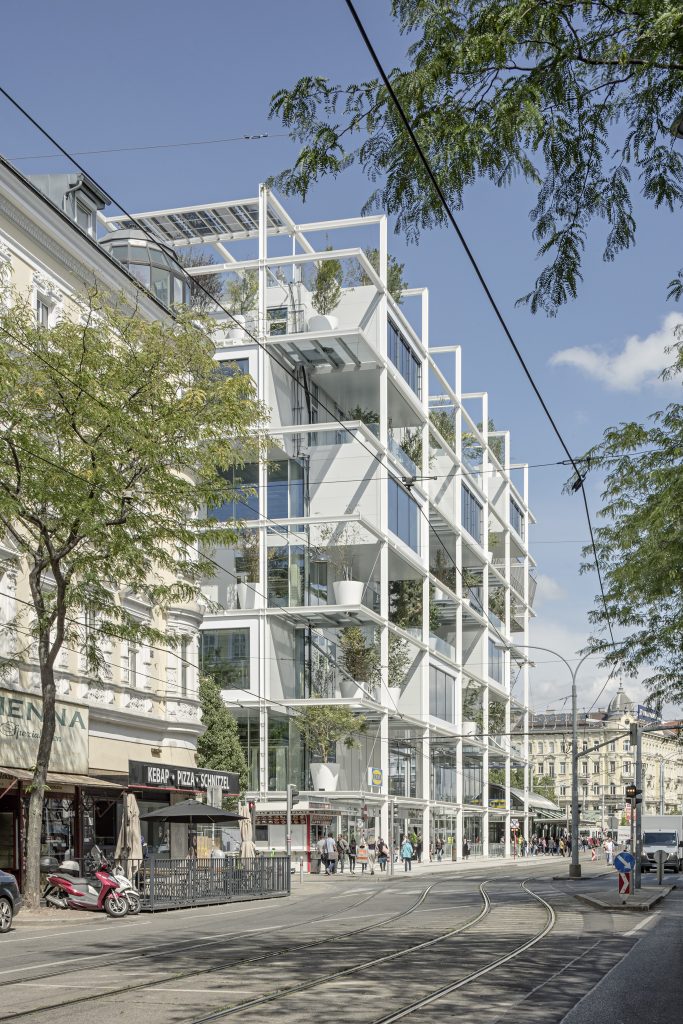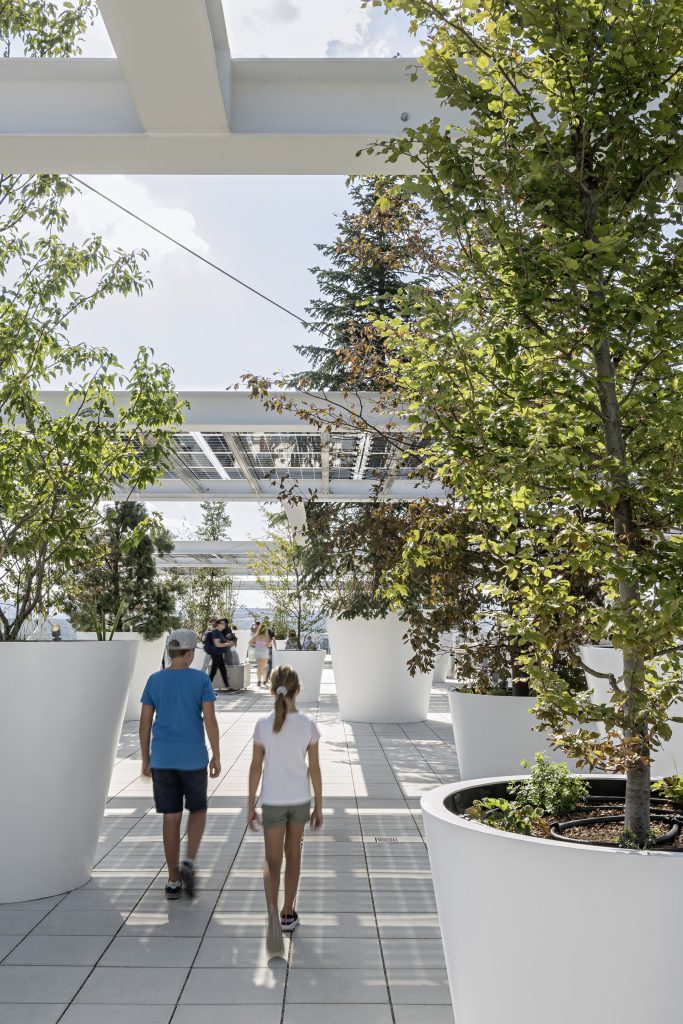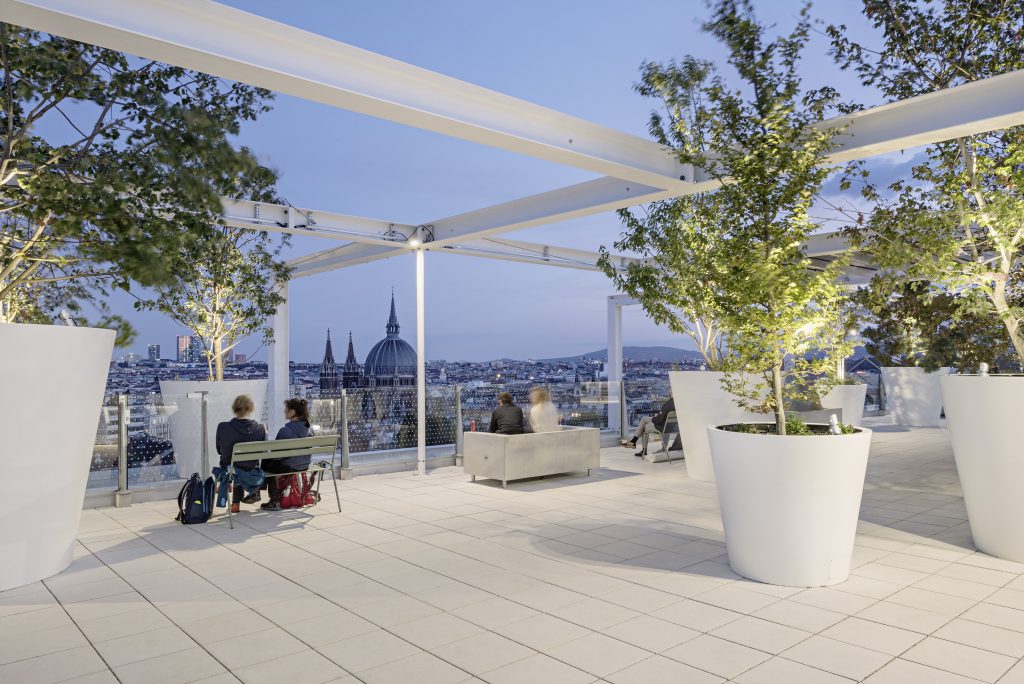Vienna

Status
completed
period
2017-2021
client
IKEA Österreich,
Querkraft Architekten ZT GmbH
architecture
Querkraft Architekten ZT GmbH
landscape architecture
Kräftner Landschaftsarchitektur & Green4Cities GmbH
team G4C
Lisa Maria Enzenhofer, Bernhard Scharf, Bernhard König, Michela Thaler
simulation/ certification
Greenpass GmbH
The good neighbour
In Vienna’s Mariahilfer Strasse, connected to the neighbouring Westbahnhof station, an inner-city furniture store was built that wants to be a good neighbour. In addition to the publicly accessible roof terrace and additional gastronomy and retail uses, the building geometry, orientation and greening were developed from the outset with the aim of creating the best possible outdoor space and a pleasant outdoor climate.

Using Greenpass simulations as a design tool, the building was planned from the outset to reduce the air temperature on hot days by 1.5°C and to create wind-protected lounging areas. Thus, the perceived temperature (PET) on the roof terrace is even perceived to be 12°C cooler on heat days.

The 160 trees on the façade and roof of the building have a noticeable influence on the microclimate. The three-dimensional arrangement of trees means that there are more plants than would be possible on the floor space. One of the most important measures in the City of Vienna’s “Urban Heat Island Strategy Plan” is greening. The climbing plants and trees of the IKEA store have a cooling and humidifying effect – a natural air conditioning system. This also improves the air temperature on the pedestrian level.

The trees are each placed in a plant trough that is supplied by an automatic, sensor-controlled irrigation system (with more than 30 irrigation circuits) in order to be able to react to the individual site conditions and water requirements. The selection of species is based on woody species that are compatible with the urban climate and suitable for the Viennese area, as well as on the woody vegetation of southern Sweden.
In addition, greened inner courtyards (voids) create small green oases inside the building.


